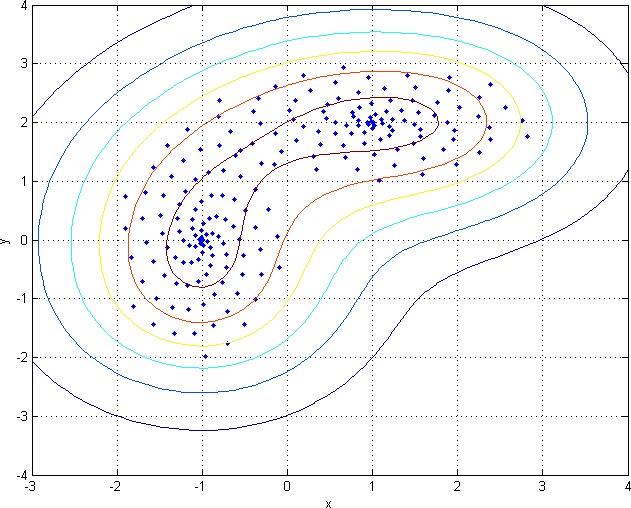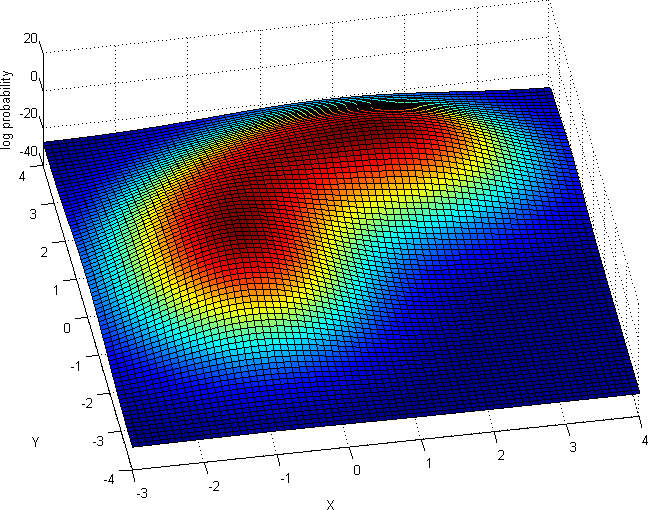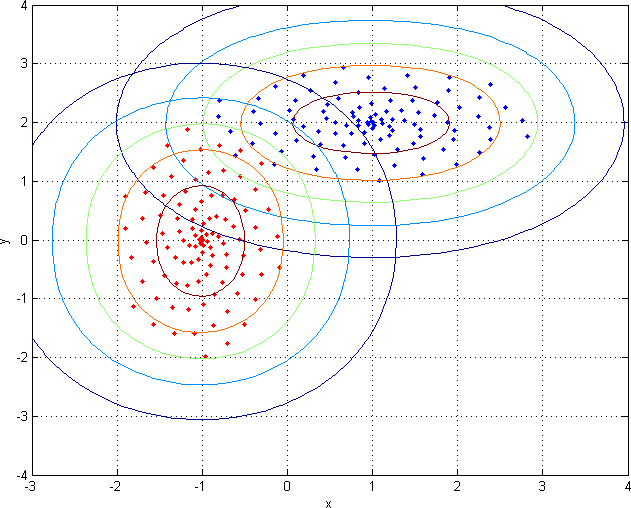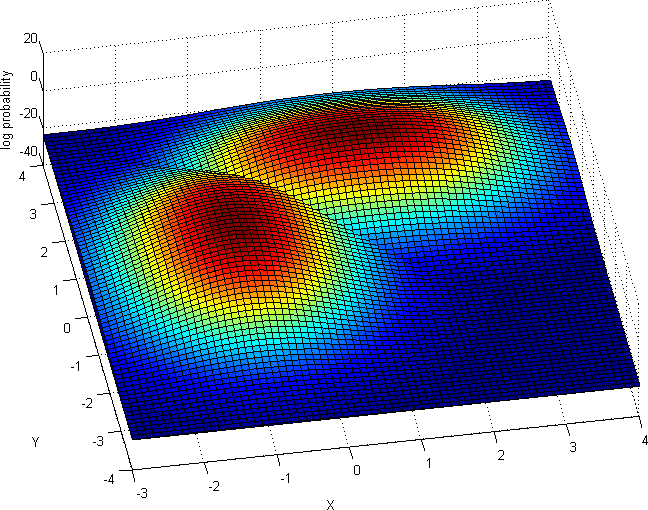SVM Density Estimation |
One-class SVM was proposed (B. Schölkopf, J. C. Platt, J. Shawe-Taylor, A. J. Smola, and R. C. Williamson. Estimating the support of a
high-dimensional distribution. Neural Computation, 13(7):1443–1471, 2001. ) for estimating the support of a high-dimensional distribution.
Given training vectors
 without any class information, the primal problem of one-class SVM is
without any class information, the primal problem of one-class SVM is

subject to
 ,
,


 ,
,
 .
.
Example
As you can see in the next four figures, the probability density function estimation performs as intuitively expected (compare to SVM probability estimation).




SVMDensityEstimation class contains the following methods:
Method | Description | Performance |
|---|---|---|
train | Train OneClass probability density estimation model
| |
classify | Estimate probability in observation point. |
The example of SVM Density Estimation usage:
1public static void ProbabilityOneClassTest() 2{ 3 Console.WriteLine("********************************************************************"); 4 Console.WriteLine("ProbabilityOneClassTest"); 5 Console.WriteLine("********************************************************************"); 6 7 Matrix xz = new Matrix(200, 2); 8 for (int i = 0; i < 100; ++i) 9 { 10 Double rho = i / 100.0; 11 Double theta = 100 * rho; 12 xz[i, 0] = rho * Math.Cos(theta) * 2 + 1; 13 xz[i, 1] = rho * Math.Sin(theta) + 2; 14 xz[i + 100, 0] = rho * Math.Cos(theta) - 1; 15 xz[i + 100, 1] = rho * Math.Sin(theta) * 2; 16 } 17 18 SVMDensityEstimation model = new SVMDensityEstimation(); 19 model.TrainOneClass(xz, false); 20 model.Save("svm_s2_cpp"); 21 22 Double pred_val; 23 for (int ri = 0; ri < xz.Rows; ++ri) 24 pred_val = model.Classify(xz.GetRow(ri)); 25 Console.WriteLine($"Model {model.Type} with kernel {model.Kernel}"); 26}
